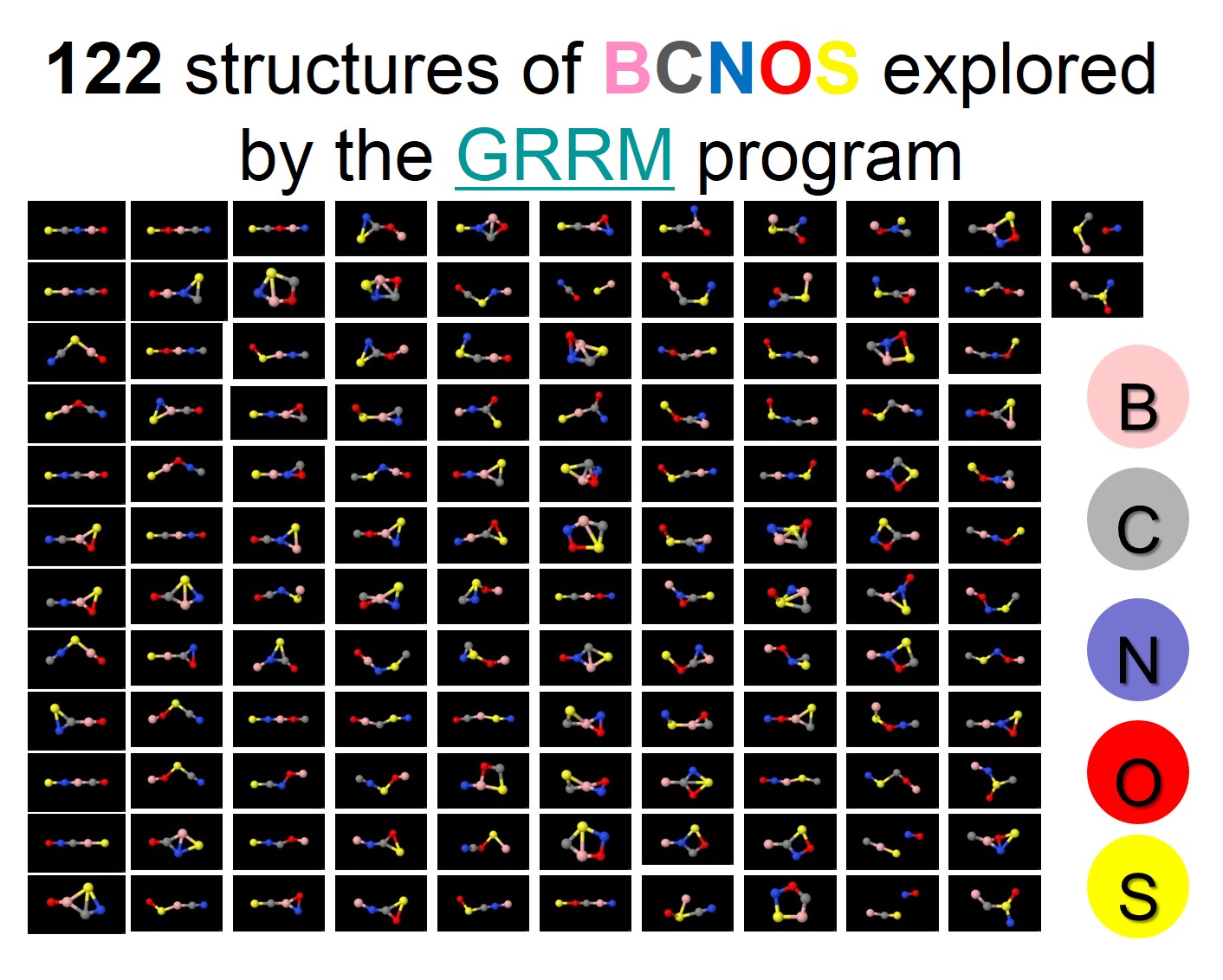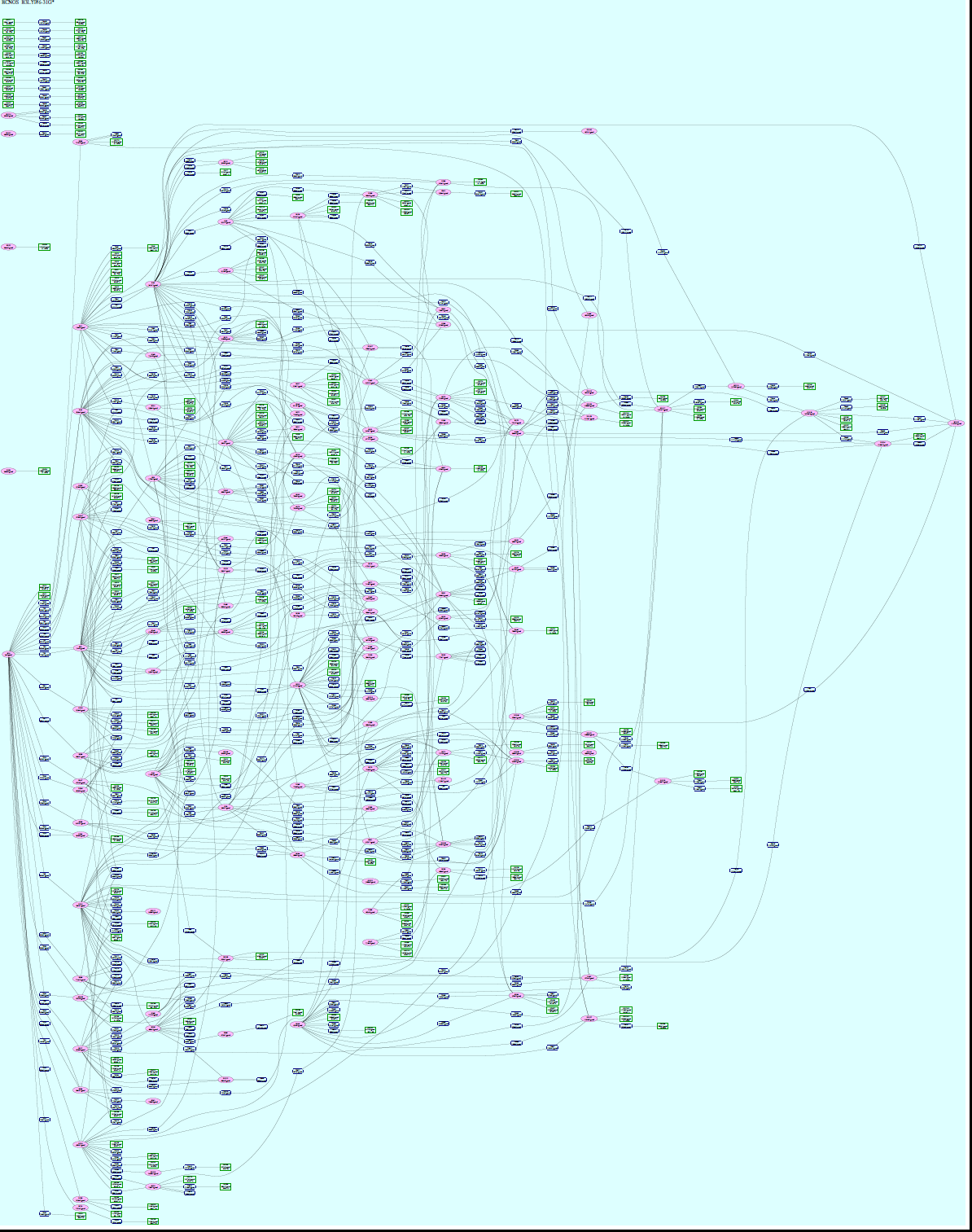Synthon Analysis Finding fragmentation processes of a target product tells us its synthetic routes.
Fragments indicate the reverse synthesis Ideal reaction without byproducts can be realized.
Discovery of A→B+C indicates the reverse B+C→A. Namely, fragmentation (Dissociation) shows the reverse synthetic route. ADD-following (ADDf) algorithm equipped in the GRRM program makes it possible to discover valuable synthetic routes by exploring dissociation channels.Such a synthetic route yields no byproducts at all, and it is an ideal reaction saving resources. GRRM program enables us to explore valuable reaction routes automatically with neither excellent knowledge, experience, nor inspiration.
.jpg)
Example of Synthon Analysis: .......... New synthetic routes of Glycine, an amino acid molecule
Let us consider Glycine H2NCH2COOH as a target compound. At first as shown in the above figure, explore fragmentation (dissociation) channels starting from the target compound of Glycine. As can be seen in the above figure, the automated exploration yields various reaction channels generating ammonia NH3, carbon dioxide CO2, hydrogen molecule H2, and carbon monoxide CO. Tracing up these fragmentation prodesses backward lead to synthetic routes of Glycine with no byproducts. Such analyses enable us to explore valuable synthetic routes.Further synthon analyses of acetolactone H2C(O)C=O generated together with NH3 gave reaction routes producing (CO2, CH2) and (CO, HCHO). Consequently, (Step1a) CO2+CH2 or (Step1b) CO+HCHO may produce acetolactone H2C(O)C=O, and the further reaction with NH3 (Step2) generates Gycine with no byproduct.
.jpg)


